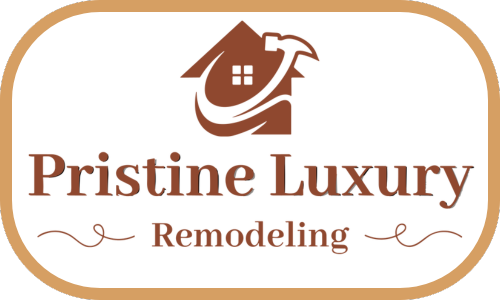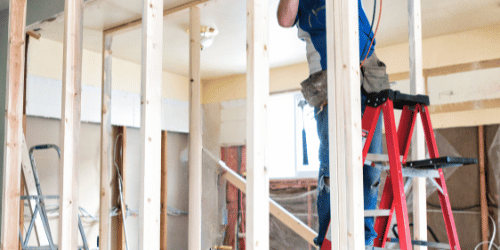Renovating your home can be an exciting yet challenging endeavor. One of the most daunting aspects is dealing with unexpected issues like asbestos or mold during wall removal. These hazardous materials can pose serious health risks and complicate your remodeling project. Understanding how to handle these issues effectively is crucial for ensuring a safe and successful renovation.
When encountering asbestos or mold during wall removal, it’s essential to follow proper safety protocols and seek professional assistance to mitigate health risks and ensure compliance with regulations.
Understanding Asbestos
What is Asbestos
Asbestos is a naturally occurring mineral fiber that was widely used in construction and other industries due to its fire-resistant and insulating properties. However, it has since been recognized as a significant health hazard. When asbestos fibers are inhaled, they can become lodged in the lungs and other tissues, leading to severe health conditions such as lung cancer, asbestosis, and mesothelioma—a rare and aggressive form of cancer primarily affecting the lining of the lungs. Due to these risks, asbestos use has been heavily regulated, and its removal requires specialized procedures to protect both workers and residents from exposure.
Health Risks of Asbestos Exposure
Exposure to asbestos fibers poses a significant health risk, as inhaling these microscopic particles can lead to severe respiratory diseases. Including lung cancer, asbestosis, and mesothelioma. The danger is especially pronounced during renovations or demolitions, where asbestos-containing materials may be disturbed, causing fibers to become airborne. Once inhaled, these fibers can remain in the lungs for years. Gradually causing inflammation and scarring that can lead to life-threatening conditions. Proper precautions and professional handling are essential when dealing with any materials that may contain asbestos to prevent exposure and ensure safety.
Identifying Asbestos in Your Home
Asbestos can be present in a variety of building materials, such as insulation, floor tiles, roofing, siding, and pipe coverings. Due to its widespread use in older constructions, it’s essential to conduct a professional inspection to. Identify any asbestos-containing materials before beginning demolition or renovation work. Disturbing these materials without proper identification and handling can release dangerous asbestos fibers into the air, posing serious health risks. Engaging a certified asbestos inspector ensures that potential hazards are identified and appropriately managed, safeguarding everyone involved in the project.
Handling Asbestos Safely
Professional Asbestos Removal
If asbestos is detected, it is crucial to enlist a licensed asbestos abatement contractor. These professionals are specially trained and equipped to handle the safe removal and disposal of asbestos-containing materials. Attempting to remove asbestos without proper expertise can lead to hazardous exposure, putting everyone in the vicinity at risk. A licensed contractor ensures that the asbestos is handled according to strict safety regulations, minimizing the release of harmful fibers and ensuring that the area is thoroughly cleaned and safe for future use.
Regulatory Compliance
Adhering to local and federal regulations is essential when dealing with asbestos. The Environmental Protection Agency (EPA) enforces strict guidelines for asbestos removal to safeguard public health. These regulations ensure that asbestos is handled, removed, and disposed of in a manner that minimizes exposure to dangerous fibers. Compliance with these laws not only protects the health of those involved in the renovation but also prevents potential legal consequences and fines associated with improper asbestos management.
Preventing Asbestos Exposure
During the wall removal process, it is crucial to seal off the area to prevent asbestos fibers from spreading to other parts of the building. Using protective gear, including respirators, disposable coveralls, and gloves, is essential to minimize exposure to these hazardous fibers. These precautions not only protect the individuals directly involved in the removal but also reduce the risk of contaminating the environment and exposing others to the dangers of asbestos.
Understanding Mold
What is Mold
Mold is a type of fungus that thrives in damp, humid environments, and it can grow on various surfaces such as walls, ceilings, and floors. If left unchecked, mold can cause significant structural damage to a building, weakening materials like drywall and wood. Additionally, mold can lead to a range of health issues, particularly respiratory problems, allergies, and other complications, making it essential to address mold growth promptly and effectively.
Health Risks of Mold Exposure
Mold exposure can have serious health consequences, particularly for individuals with asthma, allergies, or weakened immune systems. Inhaling mold spores can trigger respiratory problems, allergic reactions, and other health issues, such as coughing, sneezing, and skin irritation. For those with pre-existing conditions, mold exposure can exacerbate symptoms and lead to more severe complications, making it essential to address mold issues quickly and thoroughly.
Identifying Mold in Your Home
Mold typically manifests as black, green, or white spots on various surfaces, often accompanied by a distinct musty odor, signaling its presence. These visual and olfactory clues are usually the first indicators of mold growth in a home. However, to accurately determine the extent and type of mold, it’s advisable to conduct professional mold testing. This testing not only confirms the presence of mold but also helps identify the severity of the infestation, guiding effective remediation efforts.
Answering Common Questions
Q1 What should I do if I find asbestos during my renovation?
A1 Stop work immediately and contact a licensed asbestos abatement contractor to assess and remove the asbestos safely.
Q2 Can I remove mold myself?
A2 Small areas of mold can be cleaned with household cleaners, but larger infestations should be handled by professionals to ensure thorough removal and prevention.
Q3 How can I prevent mold from returning?
A3 Address the source of moisture, ensure proper ventilation, and use dehumidifiers to maintain low humidity levels in your home.
The Impact of Moisture on Mold Growth
Moisture is the primary factor that contributes to mold growth. Leaks, high humidity, and poor ventilation create an ideal environment for mold to thrive. Addressing these issues is crucial for preventing mold infestations.
Seeking Expert Advice
Handling asbestos and mold requires specialized knowledge and equipment. Always seek professional advice and services to ensure the safety and success of your renovation project.
Conclusion
Handling unexpected issues like asbestos or mold during wall removal is a critical aspect of any home renovation project. These hazardous materials pose significant health risks and require careful management to ensure the safety of everyone involved. By understanding the dangers, following proper safety protocols, and seeking professional assistance, you can navigate these challenges effectively.
In Prosper, TX, Pristine Luxury Remodeling is dedicated to providing expert guidance and services to help you manage these unexpected issues. Whether it’s asbestos abatement or mold remediation, their team of professionals is equipped to handle the job safely and efficiently. Don’t let these challenges derail your renovation plans—reach out to Pristine Luxury Remodeling for the support you need to achieve a successful and safe home transformation.
Visit us at Pristine Luxury Remodeling
For more information and personalized guidance visit us at Pristine Luxury Remodeling, We specialize in providing exceptional remodeling services that elevate your space into a masterpiece of luxury.







